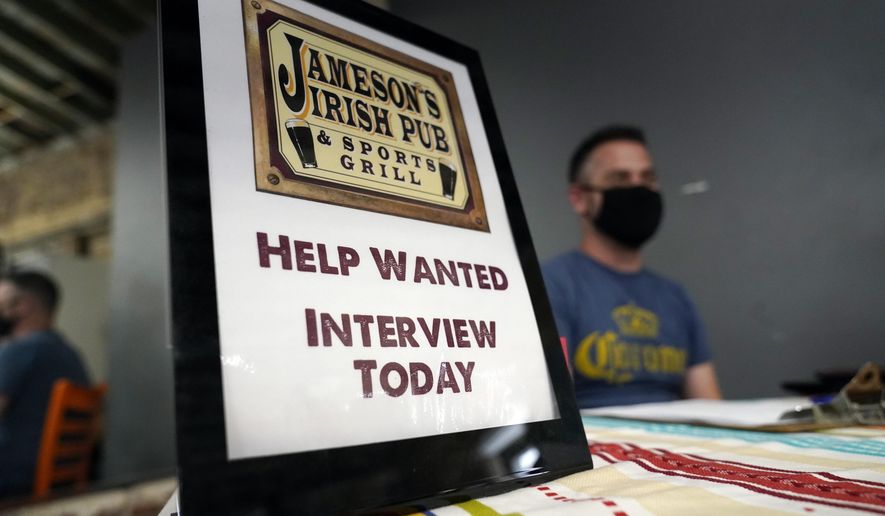WASHINGTON (AP) -— More Americans applied for unemployment benefits last week, but layoffs remain at historic lows.
Jobless claims rose by 14,000 to 202,000 for the week ending March 26, the Labor Department reported Thursday. The previous week’s tally of 188,000 claims was the fewest since 1969. First-time applications for jobless aid generally track the pace of layoffs.
The four-week average for claims, which compensates for weekly volatility, fell to 208,500 from 212,000 the previous week.
In total, 1,307,000 Americans were collecting jobless aid for the week ending March 19, the fewest since December 1969.
Employers added a robust 678,000 jobs in February, according to recent government data, the largest monthly total since July. The unemployment rate dropped to 3.8%, from 4% in January, extending a sharp decline in joblessness to its lowest level since before the pandemic erupted two years ago. The government reports March jobs data on Friday.
Job openings hovered at a near-record level in February, little changed from the previous month, continuing a trend that Federal Reserve officials see as a driver of inflation. There were 11.3 million available jobs last month, matching January’s figure and just below December’s record of 11.4 million, the Labor Department said Tuesday.
The number of Americans quitting their jobs was also historically high, at 4.4 million, up from 4.3 million in January. More than 4.5 million people quit in November, the most on records dating back two decades.
The Federal Reserve launched a high-risk effort two weeks ago in an effort to tame the worst inflation since the early 1980s, raising its benchmark short-term interest rate and signaling up to six additional rate hikes this year.
The Fed’s quarter-point hike in its key rate, which it had pinned near zero since the pandemic recession struck two years ago, marks the start of its effort to curb the high inflation that followed the recovery from the recession. The rate hikes will eventually mean higher loan rates for many consumers and businesses.
The central bank’s policymakers have projected that inflation will remain elevated at 4.3% through 2022.
Earlier this month, the government reported that consumer inflation jumped 7.9% over the past year, the sharpest spike since 1982.
The number of Americans applying for unemployment benefits last week fell to its lowest level in 52 years as the U.S. job market continues to show strength in the midst of rising costs and an ongoing virus pandemic.
Jobless claims fell by 28,000 to 187,000 for the week ending March 19, the lowest since September of 1969, the Labor Department reported Thursday. First-time applications for jobless aid generally track the pace of layoffs.
The four-week average for claims, which compensates for weekly volatility, also fell to levels not seen in five decades. The Labor Department reported that the four week moving average tumbled to 211,750 from the previous week’s 223,250.
In total, 1,350,000 Americans were collecting jobless aid the week that ended March 12, another five-decade low.
Earlier this month, the government reported that employers added a robust 678,000 jobs in February, the largest monthly total since July. The unemployment rate dropped to 3.8%, from 4% in January, extending a sharp decline in joblessness to its lowest level since before the pandemic erupted two years ago.
U.S. businesses posted a near-record level of open jobs in January - 11.3 million - a trend has helped pad workers’ pay and added to inflationary pressures.
The Federal Reserve launched a high-risk effort last week to tame the worst inflation since the early 1980s, raising its benchmark short-term interest rate and signaling up to six additional rate hikes this year.
The Fed’s quarter-point hike in its key rate, which it had pinned near zero since the pandemic recession struck two years ago, marks the start of its effort to curb the high inflation that followed the recovery from the recession. The rate hikes will eventually mean higher loan rates for many consumers and businesses.
The central bank’s policymakers have projected that inflation will remain elevated, ending 2022 at 4.3%.
Earlier this month, the government reported that consumer inflation jumped 7.9% over the past year, the sharpest spike since 1982.




Please read our comment policy before commenting.